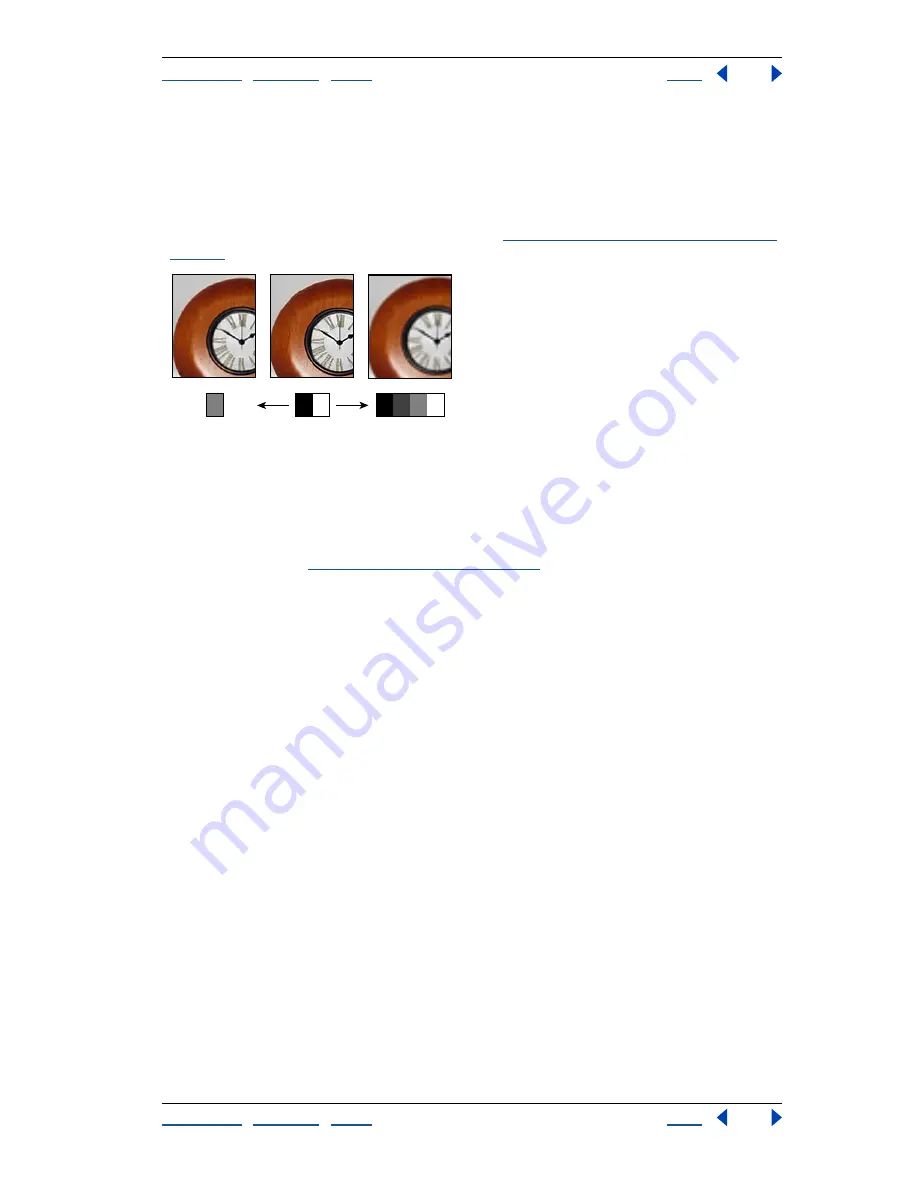
Using Help
|
Contents
|
Index
Back
66
Adobe Photoshop Help
Getting Images into Photoshop and ImageReady
Using Help
|
Contents
|
Index
Back
66
About resampling
Resampling
refers to changing the pixel dimensions (and therefore display size) of an
image. When you
downsample
(or decrease the number of pixels), information is deleted
from the image. When you
resample up
(or increase the number of pixels), new pixels are
added based on color values of existing pixels. You specify an
interpolation
method to
determine how pixels are added or deleted. (See
“Choosing an interpolation method” on
page 66
.)
Resampling examples:
A.
Downsampled
B.
Original
C.
Resampled up (Selected pixels displayed for each image)
Keep in mind that resampling can result in poorer image quality. For example, when you
resample an image to larger pixel dimensions, the image will lose some detail and
sharpness. Applying the Unsharp Mask filter to a resampled image can help refocus the
image’s details. (See
“Sharpening images” on page 155
.)
You can avoid the need for resampling by scanning or creating the image at a high
enough resolution. If you want to preview the effects of changing pixel dimensions on-
screen or print proofs at different resolutions, resample a duplicate of your file.
Choosing an interpolation method
When an image is resampled, an
interpolation method
is used to assign color values to any
new pixels it creates, based on the color values of existing pixels in the image. The more
sophisticated the method, the more quality and detail from the original image are
preserved.
The General Preferences dialog box lets you specify a default interpolation method to use
whenever images are resampled with the Image Size or transformation commands. The
Image Size command also lets you specify an interpolation method other than the default.
To specify the default interpolation method:
1
Do one of the following:
•
In Windows or Mac OS 9.x, choose Edit > Preferences > General.
•
(Photoshop) In Mac OS X, choose Photoshop > Preferences > General.
•
(ImageReady) In Mac OS X, choose ImageReady > Preferences > General.
2
For Interpolation, choose one of the following options:
•
Nearest Neighbor (Jagged) for the fast but less precise method. This method is recom-
mended for use with illustrations containing non-anti-aliased edges, to preserve hard
edges and produce a smaller file. However, this method can result in jagged effects,
which become apparent when distorting or scaling an image or performing multiple
manipulations on a selection.
A
C
B






























